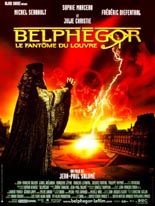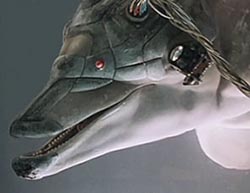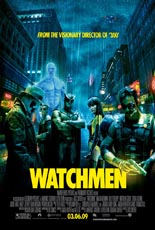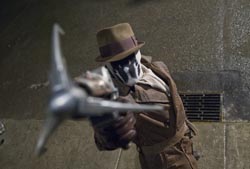
 As he would do in 2004’s Adventures of Arsène Lupin, director Jean-Paul Salomé updates a French pulp favorite in Belphégor: Phantom of the Louvre, based on Arthur Bernède’s 1927 mystery novel. Perhaps owing to the success of Stephen Sommers’ American Mummy franchise, this treatment is first and foremost a fantasy.
As he would do in 2004’s Adventures of Arsène Lupin, director Jean-Paul Salomé updates a French pulp favorite in Belphégor: Phantom of the Louvre, based on Arthur Bernède’s 1927 mystery novel. Perhaps owing to the success of Stephen Sommers’ American Mummy franchise, this treatment is first and foremost a fantasy.
In a prologue set in 1935 Egypt, a 3,000-year-old tomb is unearthed, with a sarcophagus intact. Near instantly, the mummy unleashes a virus that causes hallucinations with anyone who dares stare directly into its eyes, like Medusa. Said hallucinations are based upon the individual’s fear, from dogs to needles, and can lead to suicide. In present-day France, the mummy’s spirit exits its dirt-dry corpse, enters the electrical system and causes all kinds of havoc throughout the world-famous Louvre Museum.
 Per an on-the-case inspector (Michel Serrault, Diabolique), the floating specter is a belphégor — that is, Satan in human form. Whatever it is, it steals Egyptian amulets from the Louvre’s Egyptology collection and possesses the body of an on-the-rebound woman (Sophie Marceau, The World Is Not Enough) after she chases her cat inside the museum. While she’s soaking in the tub, the spirit makes her scribble hieroglyphics with bath crayons. It also makes her have wild sex with the electrician (Frédéric Diefenthal, Luc Besson’s Taxi comedies).
Per an on-the-case inspector (Michel Serrault, Diabolique), the floating specter is a belphégor — that is, Satan in human form. Whatever it is, it steals Egyptian amulets from the Louvre’s Egyptology collection and possesses the body of an on-the-rebound woman (Sophie Marceau, The World Is Not Enough) after she chases her cat inside the museum. While she’s soaking in the tub, the spirit makes her scribble hieroglyphics with bath crayons. It also makes her have wild sex with the electrician (Frédéric Diefenthal, Luc Besson’s Taxi comedies).
Belphégor is ridiculously silly, but knows it; why else would a frightened Julie Christie (Don’t Look Now) be made to sing “Twinkle, Twinkle, Little Star” in an elevator? With its overly convoluted story, inconsistent computer effects and game cast, Salomé’s film is right in line and on par with Russell Mulcahy’s Tale of the Mummy, another gauze-wrapped project that’s problematic, but nonetheless a mild kick to watch. —Rod Lott








